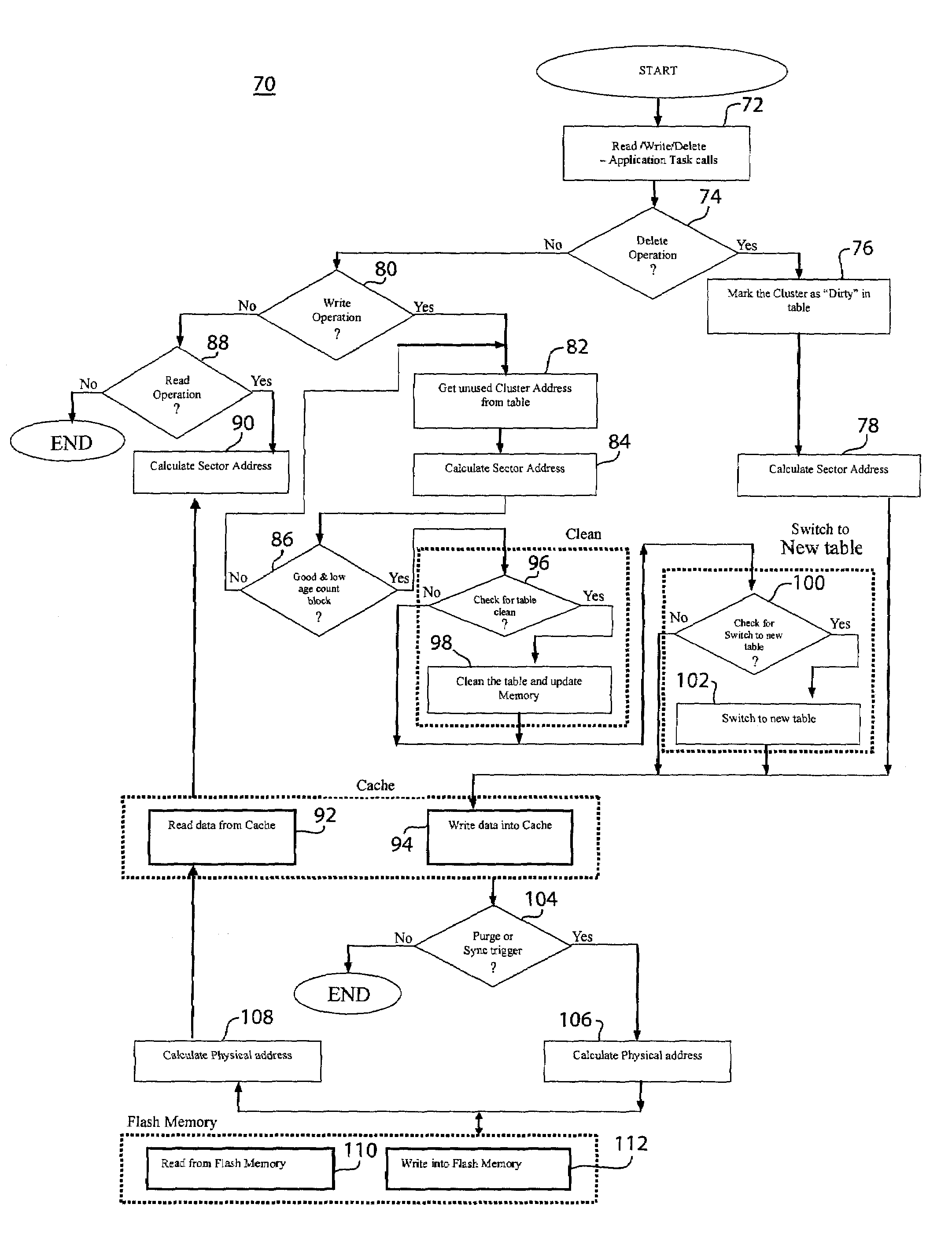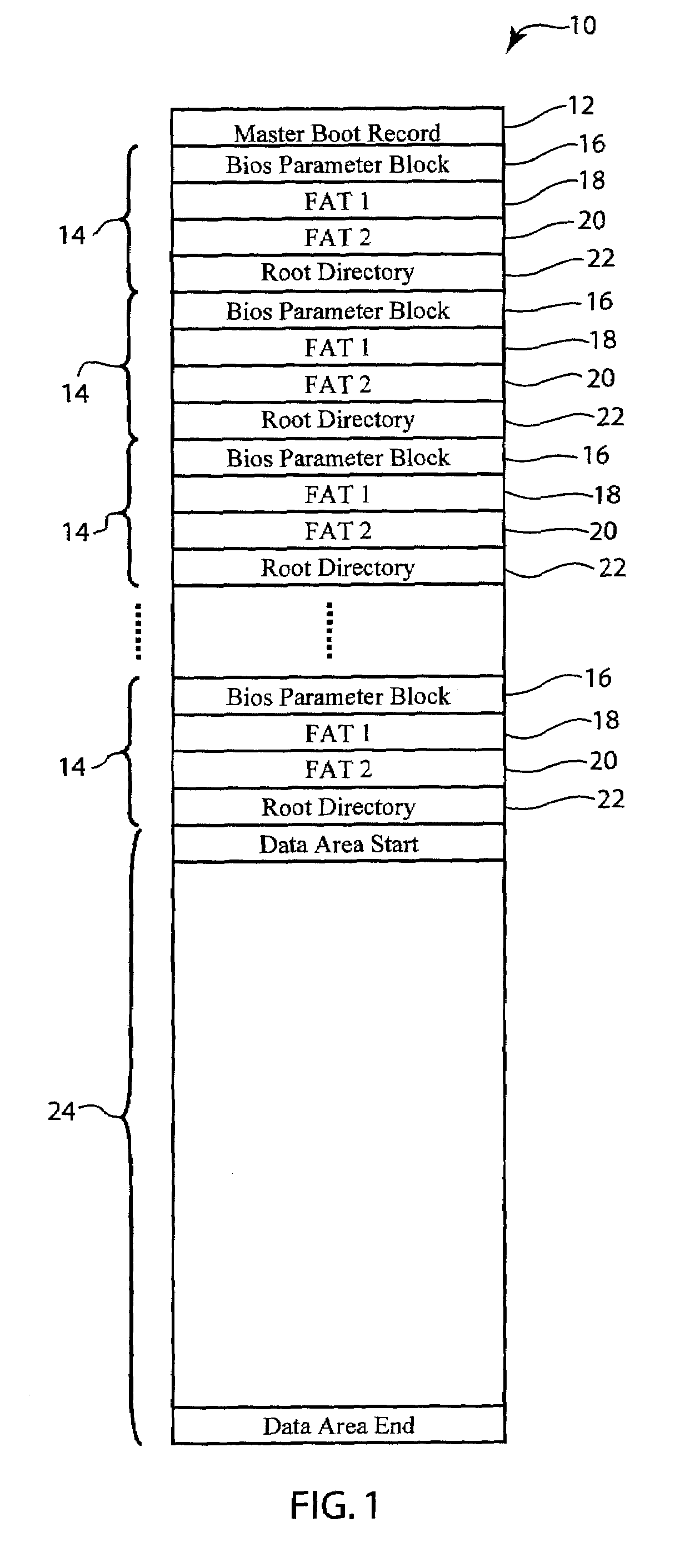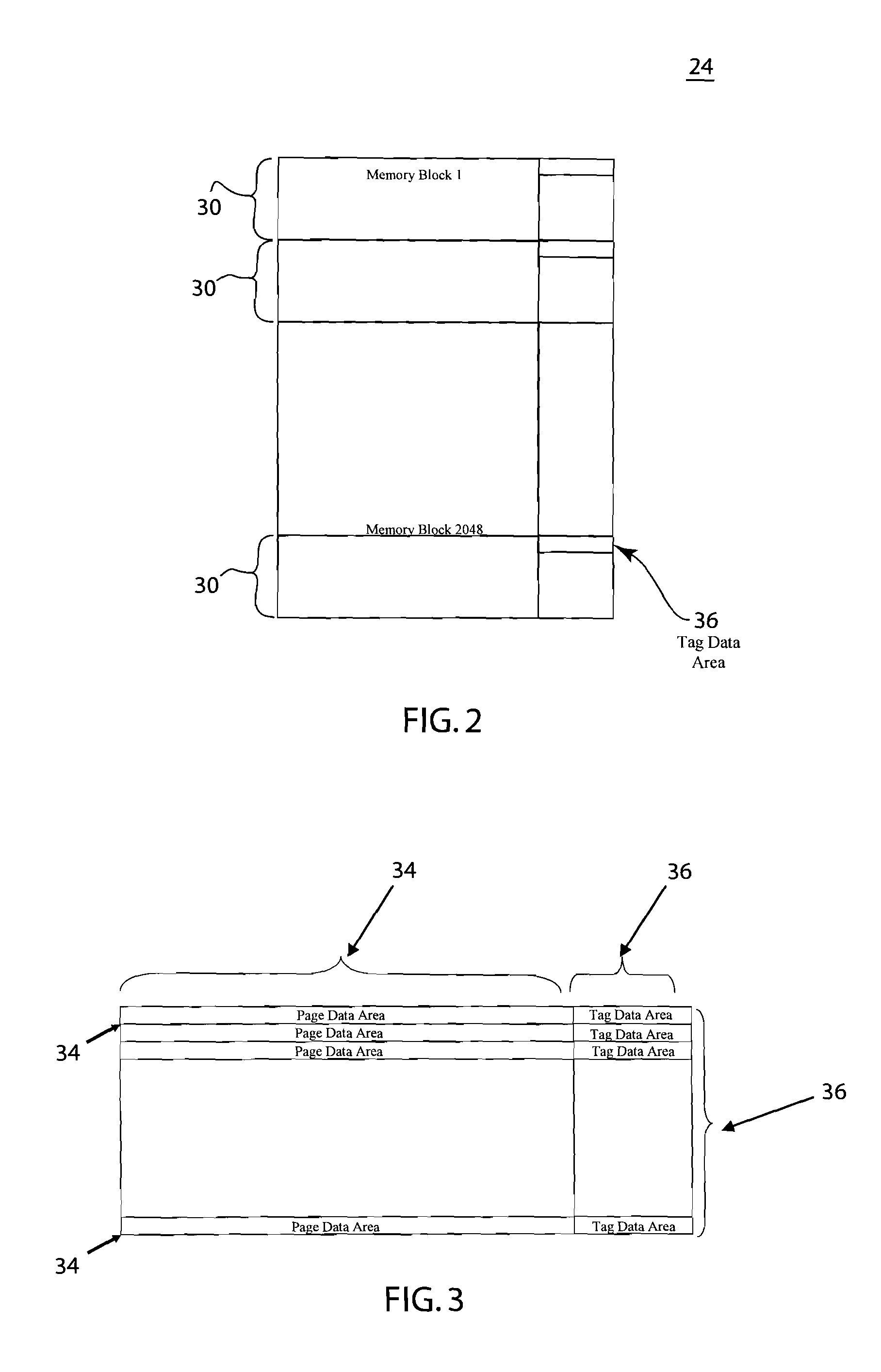System and method of flash memory wear leveling using distributed write cycles
a flash memory and write cycle technology, applied in the field of flash memory storage management and wear leveling, can solve the problems of wasting a large portion of useable memory, reducing the life of particular clusters, etc., and achieves the effect of reducing the number of times of the same area, facilitating the use of all of the memory on the flash chip, and good performan
- Summary
- Abstract
- Description
- Claims
- Application Information
AI Technical Summary
Benefits of technology
Problems solved by technology
Method used
Image
Examples
Embodiment Construction
[0014]Referring briefly to FIG. 5, the wear leveling system 48 and method is preferably implemented with a FAT12 file system. It is preferably implemented between a file system 46 layer and a flash memory driver 56. The memory 10 is logically separated into many areas as shown in FIG. 1. The Master Boot record (MBR) 12 holds the starting address of the Table Blocks 14. Preferably, the memory consists of 16 Table Blocks 14; each Table Block 14 including a Bios Parameter Block 16, FAT118, FAT220 and Root Directory 22 areas. The Data Area 24 is mapped after the 16th Table Block 14.
[0015]The physical mapping of the flash chip is shown in FIG. 2. The data area 24 preferably includes 2048 memory blocks 30 and each block 30 has preferably 32 memory pages. Each page has a page data area 34 of 512 bytes and tag data area 36 of 16 bytes. The 512 bytes are used for the file system data and the 16 bytes are used for the flash driver. Referring to both table 1 below and FIG. 4, the erase count, ...
PUM
 Login to View More
Login to View More Abstract
Description
Claims
Application Information
 Login to View More
Login to View More - R&D
- Intellectual Property
- Life Sciences
- Materials
- Tech Scout
- Unparalleled Data Quality
- Higher Quality Content
- 60% Fewer Hallucinations
Browse by: Latest US Patents, China's latest patents, Technical Efficacy Thesaurus, Application Domain, Technology Topic, Popular Technical Reports.
© 2025 PatSnap. All rights reserved.Legal|Privacy policy|Modern Slavery Act Transparency Statement|Sitemap|About US| Contact US: help@patsnap.com



